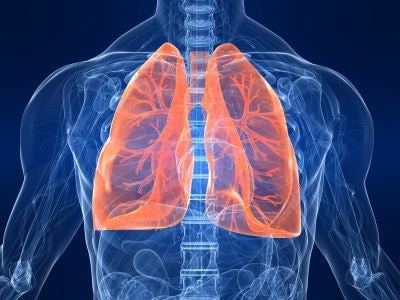Your support helps us to tell the story
From reproductive rights to climate change to Big Tech, The Independent is on the ground when the story is developing. Whether it's investigating the financials of Elon Musk's pro-Trump PAC or producing our latest documentary, 'The A Word', which shines a light on the American women fighting for reproductive rights, we know how important it is to parse out the facts from the messaging.
At such a critical moment in US history, we need reporters on the ground. Your donation allows us to keep sending journalists to speak to both sides of the story.
The Independent is trusted by Americans across the entire political spectrum. And unlike many other quality news outlets, we choose not to lock Americans out of our reporting and analysis with paywalls. We believe quality journalism should be available to everyone, paid for by those who can afford it.
Your support makes all the difference.Screening heavy smokers with low-dose computer tomography (CT) instead of X-rays can reduce deaths from lung cancer by 20 percent, a massive US study released Thursday shows.
Previous studies have shown that helical CT scanning can identify small tumors in the early stages of growth better than X-rays.
"But it's never been shown before conclusively that the procedure has an effect on the ultimate outcome, namely lung cancer mortality," Harold Varmus, head of the National Cancer Institute, told reporters.
Although more research is needed to determine why CT-scan screening was tied to such a significant drop in lung cancer mortality, "the assumption is that a larger number of early cancers that would have been lethal were removed in patients who had undergone helical CT scanning," said Varmus.
Helical CT uses X-rays to obtain a multiple-image scan of the entire chest during seven to 15 seconds.
The findings are from the National Lung Screening Trial (NLST), which starting in 2002 enrolled more than 50,000 current and former heavy smokers, aged 55-74, around the United States to determine whether screening with low-dose helical, or spiral, CT would reduce lung cancer mortality.
Participants who took part in the study at 33 centers across the United had on average "30 pack-years of smoking," or the equivalent of smoking a pack a day for 30 years, and were either current smokers or had quit in the past 15 years.
They were randomly assigned to receive annual screening for three years, either with low-dose CT or conventional X-rays. The last screenings were completed in 2007.
All deaths from lung cancer were documented, and when researchers reviewed the data, they found that a 20 percent drop in lung cancer mortality among patients who were screened using CT compared to those screened with X-rays.
"This finding has important implications for public health with the potential to save many lives among those at greatest risk for lung cancer," said Varmus.
"Lung cancer is the leading cause of cancer mortality in the US and throughout the world, so a validated approach that can reduce lung cancer mortality by even 20 percent has the potential to spare very significant numbers of people from the ravages of this disease," he said.
In 2007, roughly 90 million people in the United States had a history of cigarette smoking. About half of them were current smokers.
Doctors project that some 157,000 people in the United States will die of lung cancer this year, the vast majority of them current or former heavy smokers.
"This screening does not prevent lung cancer and doesn't protect the large majority of subjects from death from lung cancer," said Varmus, stressing that the best way to prevent smoking-related lung illness was to quit smoking or never start.
The researchers raised some concerns about CT scans, including that they cost more than X-rays and expose patients to more radiation than X-rays.
A standard two-view chest X-ray exposes a patient to 0.1 millisieverts (mSv) of radiation, while the low-dose CT scans used in the study were estimated to have resulted in an average dose or 1.4 mSv, said Denise Aberle, a professor of radiology from the University of California at Los Angeles.
Another concern about low-dose CT screening for lung cancer was that the procedure produced a high percentage of false positives, which can cause some anxiety in patients.
About 25 percent of CT-scan screenings in the NLST study found abnormalities, but most of them were not lung cancer, said Doug Lowy, deputy director of basic science at the National Cancer Institute.
When a scan finds an abnormality, medical procedures, such as chest surgery or lung biopsies, have to be undertaken, and those carry their own dangers and risks of complications for the patient, Lowy said.
kdz/rl

Join our commenting forum
Join thought-provoking conversations, follow other Independent readers and see their replies
Comments